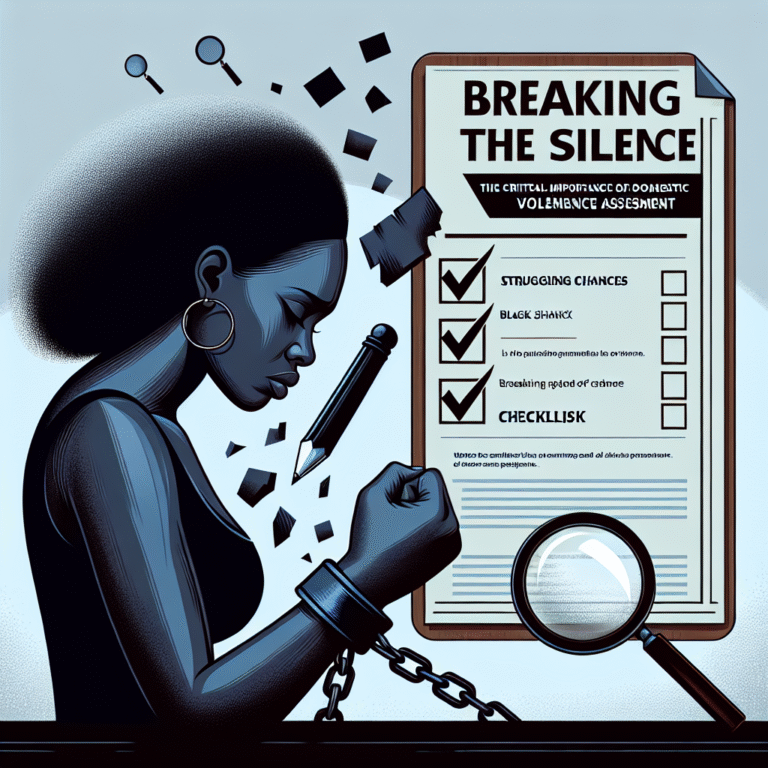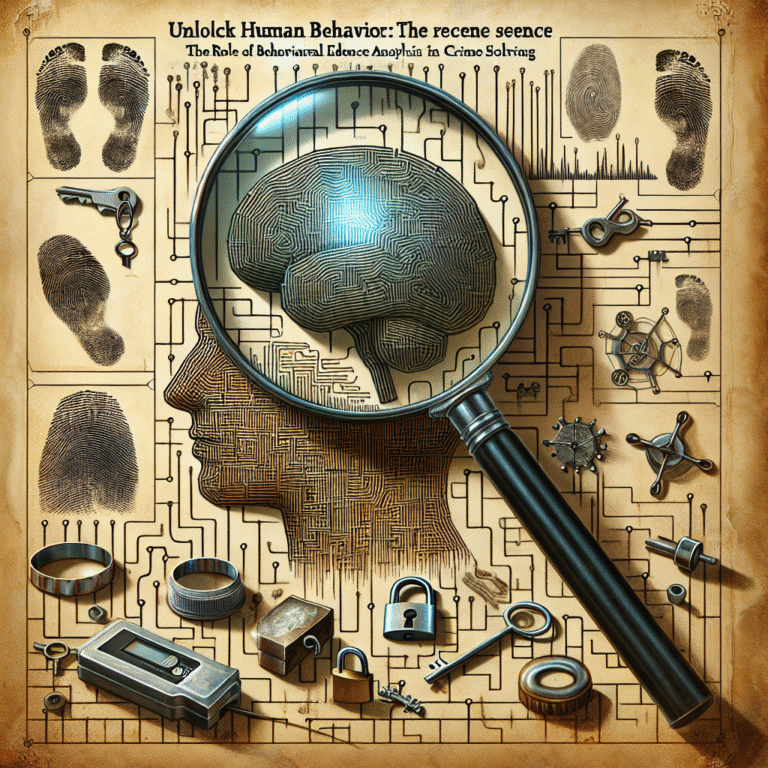
Introduction
From the script of a nail-biting thriller to the solemn halls of a courtroom, criminal profiling has made its mark on our collective consciousness. This intriguing intersection of psychology and criminal justice is not merely the stuff of fiction; it plays a pivotal role in solving real-life crimes. Real-Life Cases: How Criminal Profiling Solved Infamous Crimes illuminates the ways in which behavioral analysis has brought justice and closure to victims’ families. In this article, we explore notable cases, the techniques employed, and why understanding these methods is essential in today’s crime-fighting landscape.
The Science and Art of Criminal Profiling
Understanding Criminal Profiling
Criminal profiling—a technique that combines behavioral science with criminology—aims to build a psychological profile of a suspect based on the characteristics of the crime. This process helps law enforcement agencies narrow down potential suspects and understand the motivations behind heinous acts.
The two main approaches to profiling include:
- Inductive Profiling: This method relies on generalizations drawn from statistics and data from past criminal cases.
- Deductive Profiling: Here, the profiler analyzes the specific details of a crime to build a profile of the offender.
Importance of Profiling in Law Enforcement
Criminal profiling is more than just a tool; it’s a vital resource in solving crimes. It enables investigators to view a case through a psychological lens, providing insights that pure forensic evidence might not. Numerous real-life cases where criminal profiling solved infamous crimes demonstrate its effectiveness.
Noteworthy Case Studies
1. The Unabomber: A Profile of Terror
Case Overview: Theodore Kaczynski, known as the Unabomber, conducted a nationwide bombing campaign aimed at individuals associated with modern technology.
Profiling Insights: The FBI used a behavioral analysis unit to develop Kaczynski’s profile based on the contents of his manifesto. Profilers noted his anti-technology stance and academic background.
Impact: The breakthrough came when Kaczynski’s brother recognized writing similarities between the manifesto and Ted’s letters. This led to Kaczynski’s arrest, illustrating how careful behavioral analysis can solve crime.
Analysis
The Unabomber case exemplifies the intersection of psychological understanding and investigative work. Profilers used details from the crime and the suspect’s personality traits to develop a comprehensive profile that ultimately led to his capture.
2. The Green River Killer: From the Shadows
Case Overview: Gary Ridgway, known as the Green River Killer, confessed to murdering 49 women in Washington state during the 1980s and 1990s.
Profiling Insights: Profilers noticed a pattern in Ridgway’s choice of victims—primarily sex workers—who were often marginalized and hard to trace. Behavioral analysts created a profile that highlighted Ridgway’s history, personality, and methods.
Impact: Ridgway’s apprehension in 2001 resulted from years of profiling, corroborating evidence, and DNA analysis, illustrating a successful synthetic approach in combining profiling with forensic science.
Analysis
The meticulous collection of victimology data and behavioral cues exemplifies how profiling creates a roadmap to capture elusive suspects like Ridgway, embodying the essence of Real-Life Cases: How Criminal Profiling Solved Infamous Crimes.
3. The BTK Killer: A Case of Dual Identity
Case Overview: Dennis Rader, the BTK (Bind, Torture, Kill) Killer, eluded capture for over three decades.
Profiling Insights: Profilers looked at Rader’s letters sent to police, revealing a need for attention and control. He operated in a predictable pattern, which became crucial in forming his profile.
Impact: Rader was arrested in 2005 when he resumed communication, allowing investigators to refine their understanding of his psyche. This arrest showcased the importance of understanding an offender’s motivations.
Analysis
By examining Rader’s communication style, profiling experts pieced together his psychological desires, leading law enforcement to make critical connections that ultimately led to his capture.
Tables and Charts: Key Insights at a Glance
| Criminal Case | Profile Insights | Impact of Profiling |
|---|---|---|
| Unabomber (Ted Kaczynski) | Anti-technology, intellectual | Brother’s recognition led to arrest |
| Green River Killer (Gary Ridgway) | Victimology focus, societal patterns | Successful integration of demographic data |
| BTK Killer (Dennis Rader) | Need for attention, dual identity | Communication analysis led to identification |
Common Misconceptions About Criminal Profiling
1. Profiling is an Exact Science
While profiling can be informative, it is not infallible. Profilers rely on statistics and behavior patterns, but individual cases can diverge from these norms.
2. Profiling Can Replace Traditional Investigation
Criminal profiling serves as a tool rather than a substitute for traditional investigative techniques. It is most effective when combined with evidence and investigative work.
3. Profilers Always Get Their Man
Perhaps one of the largest misconceptions is believing profilers always accurately predict or identify suspects. Oftentimes, it’s a collaborative effort involving multiple law enforcement techniques.
4. Profilers Only Focus on Serial Killers
Though profiling is often popularized through serial killer cases, it can be applied to various types of violent and non-violent crimes.
5. All Profiling is Done in the Field
A significant portion of profiling occurs in research settings, applying psychological models and reviewing past cases to inform future investigations.
Conclusion
Through the lens of Real-Life Cases: How Criminal Profiling Solved Infamous Crimes, we witness not just the power of the human mind but the necessity of understanding motivation, behavior, and societal context in the journey to find justice. The case studies of the Unabomber, the Green River Killer, and the BTK Killer remind us that behind every crime are complex individuals who can often be understood through careful psychological analysis.
As we continue to advance our knowledge and technology, the synergy between behavioral science and traditional methods promises to refine and enhance our ability to confront crime. For aspiring profilers and law enforcement officials, the key takeaway is this: understanding the mind is as crucial as collecting evidence.
FAQs
1. What is criminal profiling?
Criminal profiling is a technique used to identify the psychological traits of offenders based on criminal behavior and crime scene evidence.
2. How reliable is criminal profiling in solving crimes?
While effective, profiling is not a guaranteed solution. It can provide valuable insights but should be complemented with forensic evidence and traditional investigative methods.
3. How did criminal profiling help in the capture of famous criminals?
Profiling helped law enforcement develop insights into the behavioral patterns of criminals, narrowing down suspect lists and leading to significant arrests, as seen in several high-profile cases.
4. Can profiling be applied to all types of crimes?
Yes, profiling can apply to various crime types, from violent crimes to financial fraud, although it is most commonly associated with violent offenses.
5. Is criminal profiling only done by professionals in law enforcement?
While professional profilers often conduct criminal profiling, insights can also come from forensic psychologists, criminologists, and researchers studying criminal behavior.
By integrating psychological insights with investigative techniques, society can craft a more proactive and informed approach to tackling crime, while inspiring future generations of professionals in the field.

















